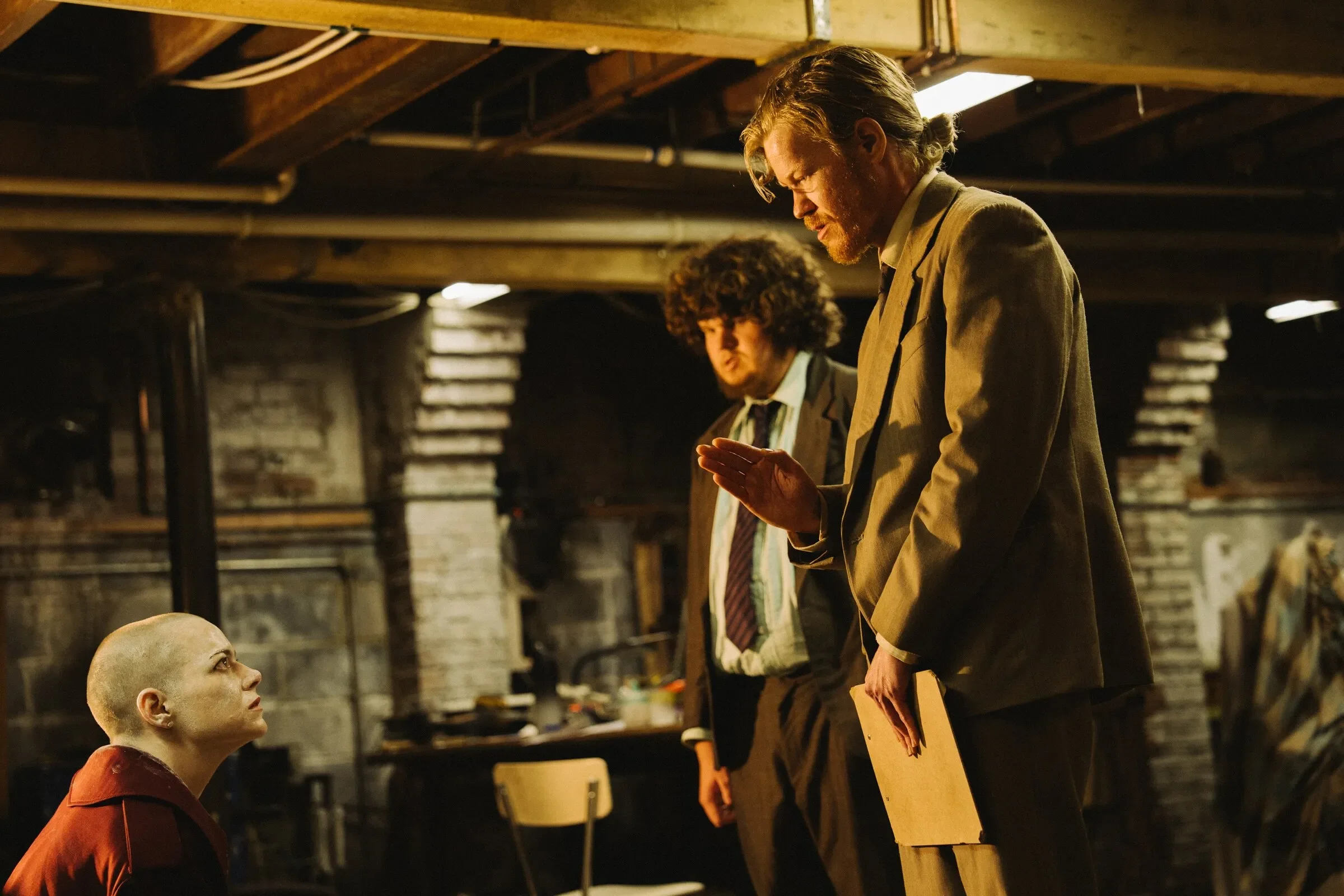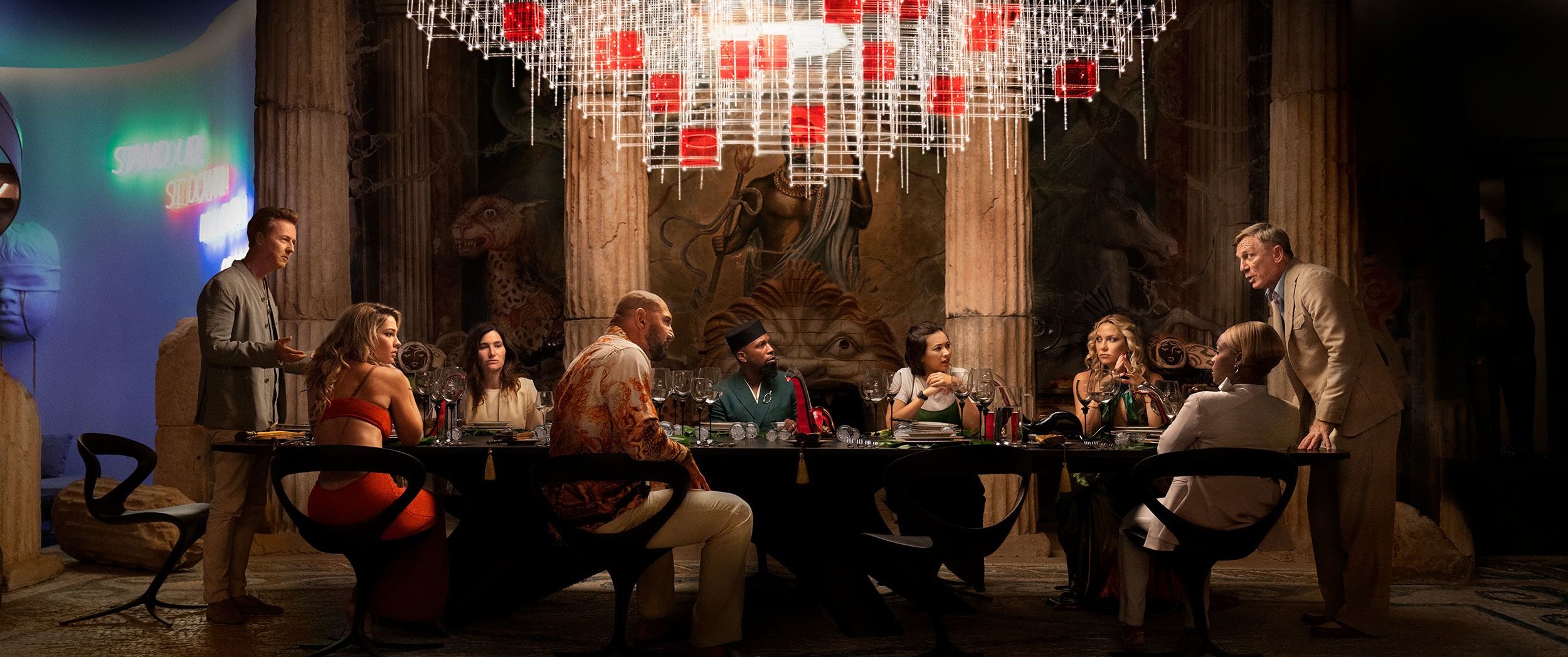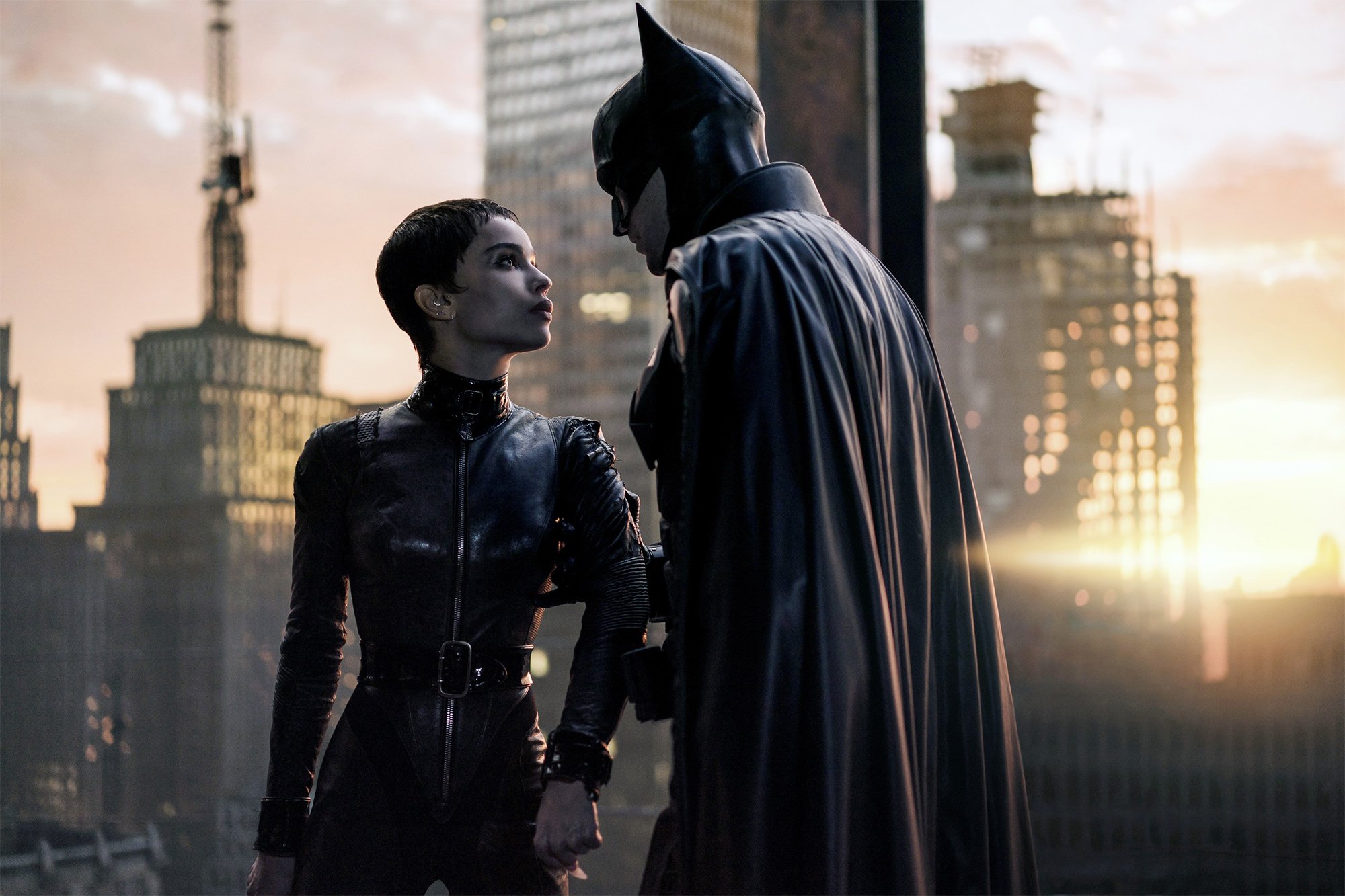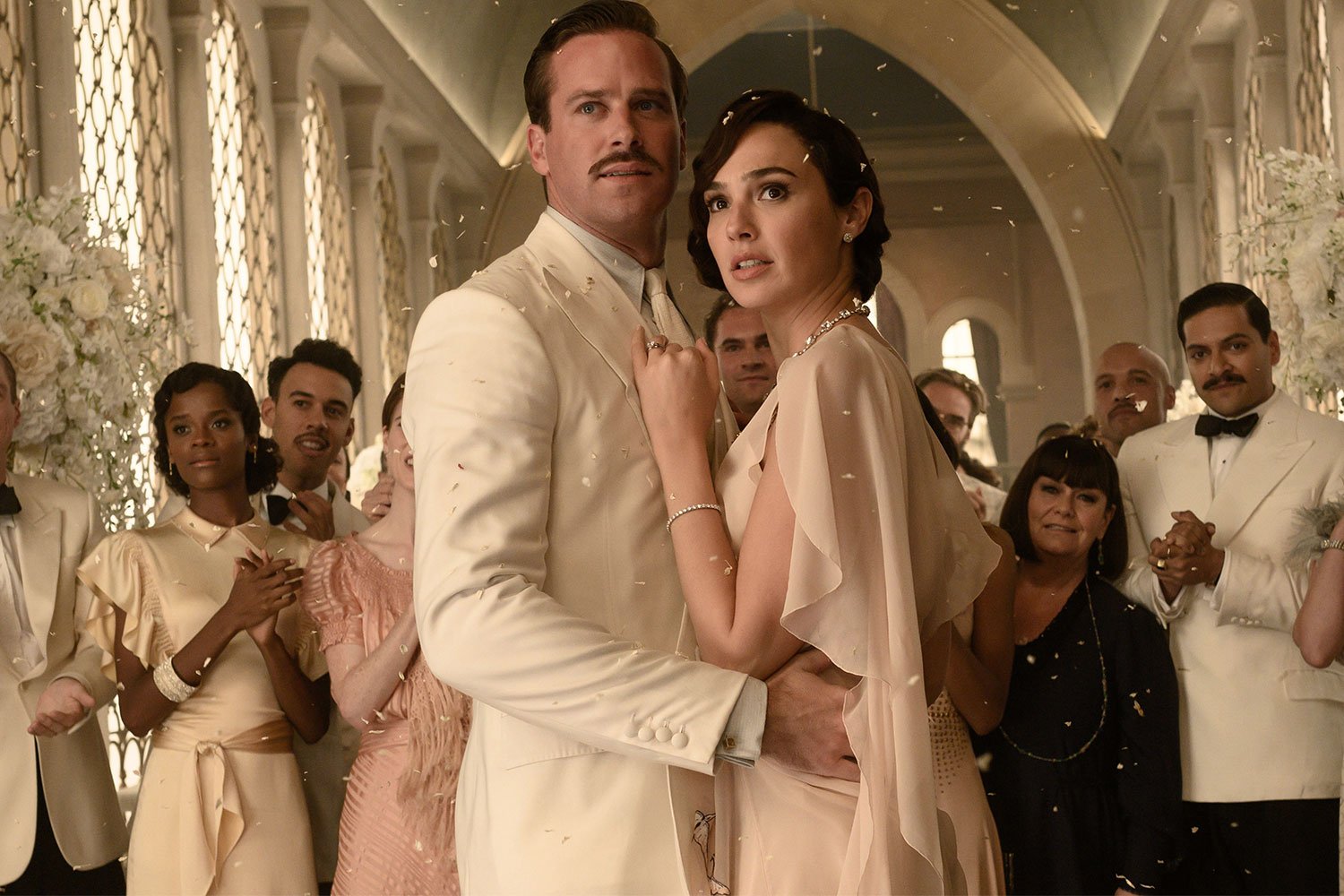WAKE UP DEAD MAN: A KNIVES OUT MYSTERY
Directing: B+
Acting: B
Writing: B+
Cinematography: B+
Editing: B+
Is Josh O’Connor the new Pedro Pascal? This guy is everywhere! Six movies in the past three years, four of them in 2025 alone: Rebuilding (which I had intended to see but couldn’t thanks to bullshit limited release locations); The History of Sound (loved); The Mastermind (dreadfully dull); and now, Wake Up Dead Man: A Knives Out Mystery (spoiler: delightful). Even with the varied results, I don’t mind so much. O’Connor is a deeply talented actor, it’s great that he’s trying so many different types of roles, and frankly, he’s way hotter than Pedro Pescal. I said what I said!
Which leads me to writer-director Rian Johnson, whose only feature films have been Knives Out movies for the past six years (though he did direct four episodes of Poker Face in 2023). I struggle to think of another filmmaker who so consistently makes movies with star-studded ensemble casts with such success—and all of them in the same genre, no less. Ensemble films with too many big stars in them have long been known to tip toward failure, but perhaps Johnson has a new insight: on average, his casts lean more toward “great actors” than “movie stars.” Granted, we’ve long since moved into an era when being a movie star doesn’t mean what it used to.
Josh O’Connor, for example, is a mid-level “movie star” at best, but he long ago proved himself a talented and versatile actor. Even his queer roles have all been great, from 2017’s God’s Own Country (when I first noticed him) to 2025’s The History of Sound, and I’m going to go ahead and include 2024’s Challengers—O’Connor’s biggest box office earner, at least among major roles—as well. Rain Johnson has perfectly cast O’Connor in Wake Up Dead Man as Father Jud Duplenticy, who gets transferred to another parish after rashly punching a rude deacon in the face (we never hear what the deacon said to him, as he is an otherwise inconsequential character whose face we don’t even see, but I was still mildly disappointed by that). Somewhat ironically given all that I have said about O’Connor thus far, Jud, being a priest, is completely sexless in this film, not just celibate but never even indicating any desires. His passions are reserved for a steadily growing hatred for the priest at Our Lady of Perpetual Fortitude, Monsignor Jefferson Wicks. Josh Brolin is also perfectly cast as Wicks, a complicated but blustering control freak of a man. Wicks, incidentally, is not so celibate, at least not by the strict rules of Catholicism: he regularly asks Jud to take his confession, and is constantly confessing all the times he’s masturbated, including the locations and varying techniques of it.
So this is where the ensemble cast aspect of it comes in: the inevitable murder happens, and the small number of regulars who remain loyal to Wicks’s congregation are all quickly identified as suspects: Martha the deeply devotional church lady (Glenn Close); Nat the town doctor (Jeremy Renner); Vera the lawyer (Kerry Washington); Lee the best-selling author now in a professional slump (Andrew Scott); Simone the former concert cellist rendered disabled by an undiagnosable chronic pain disorder (Cailee Spaeny); and Cy the YouTube-obsessed aspiring Republican politician (Daryl McCormack). None of these characters get a great deal of development, but that’s beside the point of the exercise in a film like this; what’s important is that each one of them gets assigned a clear motive.
And on top of all that, we get Mila Kunis as the local police chief in this small New York State town; Jeffrey Wright as the bishop who assigns Jud to Wicks’s church (Wright is always a welcome presence and he doesn’t get enough screen time here); Thomas Haden Church as Martha’s groundskeeper lover; and my favorite surprise appearance, Bridget Everett, comedian and star of HBO’s Somebody Somewhere, as a gabby construction company employee.
You may have noticed I haven’t yet even mentioned Daniel Craig. Well, now I have! We do see his face first in Wake Up Dead Man, but he’s reading a written account of what has transpired at Our Lady of Perpetual Fortitude, which quickly cuts to that backstory as the narrative, introducing all of these characters and leading up to the murder. Craig isn’t seen at all through all this backstory, at least half an hour or more, until the police chief has called in Private Detective Benoit Blanc, he meets all of these characters in question, as well as the writer of the aforementioned account, and we finally figure out how he came to be in possession of it—in a way not quite suggested at first, by how this movie is cleverly edited.
And yes, the story and the vibe are both very close to that of 2019’s Knives Out and 2022’s Glass Onion—which is by design. Which is to say: if you enjoyed those other two movies (and I very much did), then you will enjoy this one. They all feature effective humor, intriguing mystery, solid performances, and a big reveal at the end of who the murderer is and exactly how the deed was done. It’s formula, sure, but also the point: it’s a formula that works. And to Rain Johnson’s exceeding credit, even people who usually figure out the mystery before it’s revealed don’t do it so easily in Johnson’s films. My husband cycled through four different theories—including that all the suspects worked together to commit the murder—until the final reveal proved all his predictions had been wrong.
Wake Up Dead Man does have a few minor details that don’t make sense under scrutiny, such as local police using sirens when merely arriving for a meeting with someone. There is a quasi-meta moment when Benoit Blanc notes that they are not in a mystery fiction, even though of course they are. And, as always, your mileage may vary on Daniel Craig’s Kentucky-fried accent, which some find fun and others find ridiculous. I fall somewhere in the middle on that one, though as these movies go on, it feels sort of like an essential trademark of the series. The bottom line is that I alway have a blast watching these movies, and while I would also love to see Brian Johnson branching out into other genres again, I would happily take another five of these, so long as the quality stays consistent. So far, it has—the first film is the easy favorite, of course, as the kick-off to the series, but I found the second one nearly as delightful (though one wonders how well it will age over time, given how much of its covid-era production was worked directly into the script).
I should note that Wake Up Dead Man made me laugh quite a lot, often really hard, especially in its first hour or so. The humor certainly tapers off as the tensions rise, and I kind of missed the humor in the second half. But, being set in a Catholic church and with congregants as most of its characters, Wake Up Dead Man also weaves in themes of duty, morality, and loyalty with a nuance not quite present in the previous films, which injects the Knives Out series with a new kind of life. Rain Johnson is a consummate writer, and particularly designer of plot construction, which is the real star of all these movies. I’ve been careful not to spoil anything here, as there are unsurprisingly many plot twists (watch out for the deliberately misleading trick of Blanc saying “Why’d you do it?”). Suffice it to say that Wake Up Dead Man is every bit the entertainment mystery it is designed to be. The only true disappointment is that, even by comparison to the previous two films, its theatrical release was significantly limited, mostly confining its access to Netflix. These movies are always more fun in theaters, but the flip side is that now millions of people have instant access. So fire it up and watch it right now!
You’ll figure it out as soon as they do.
Overall: B+










